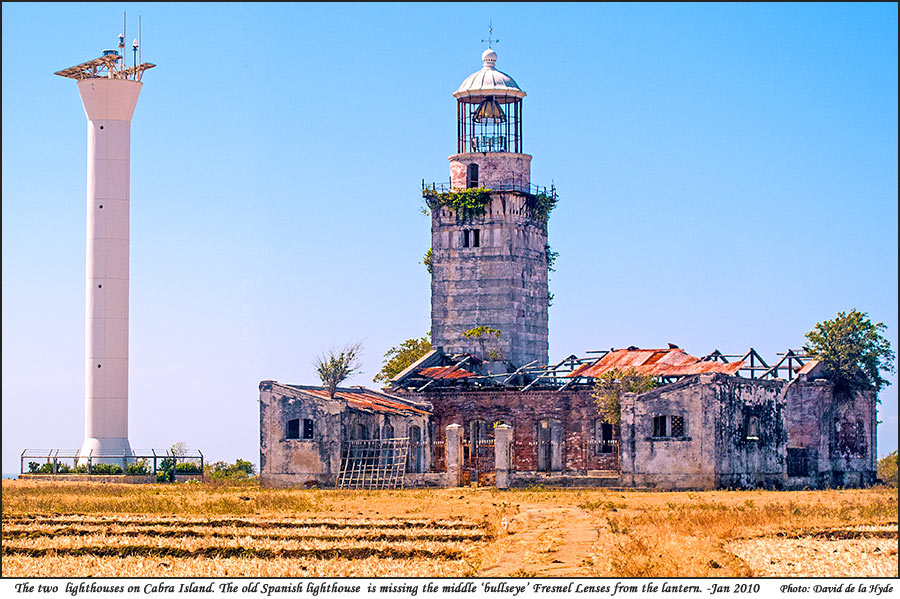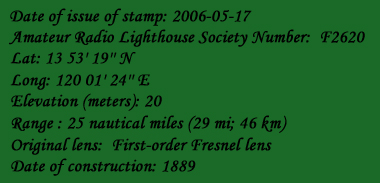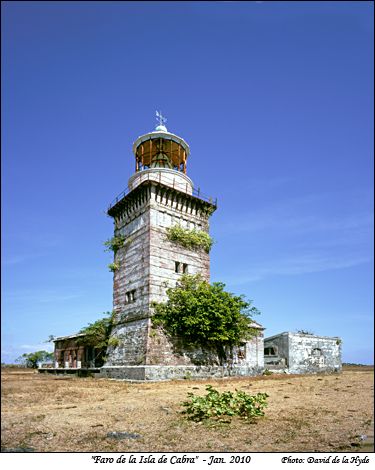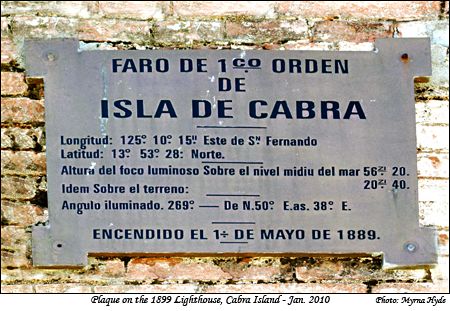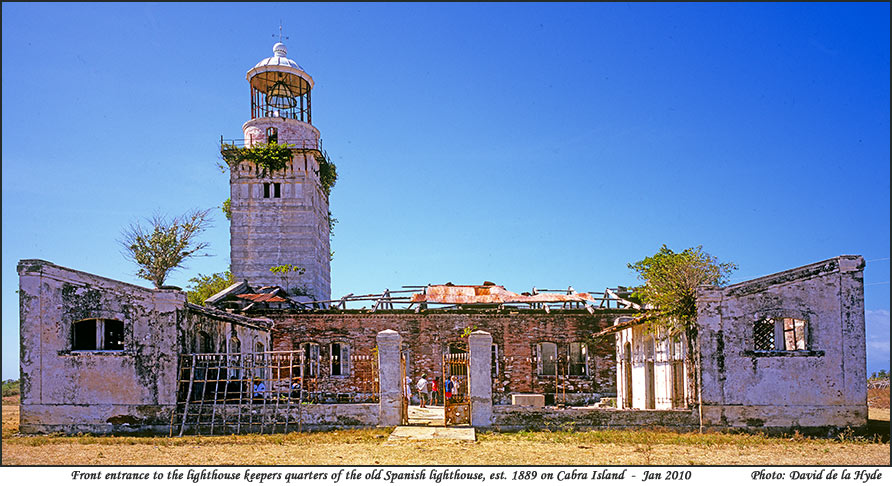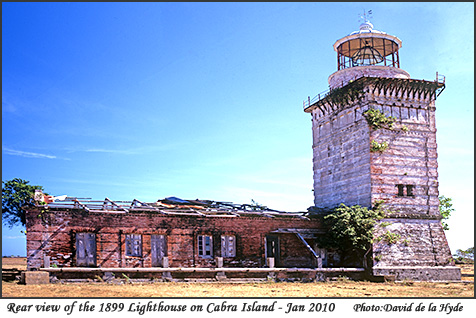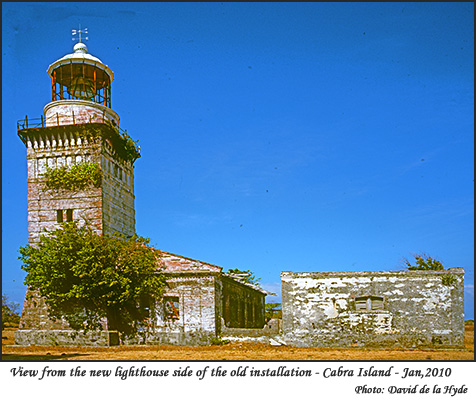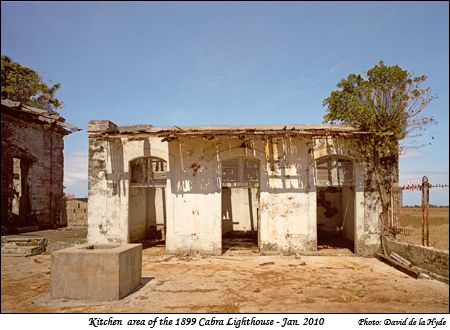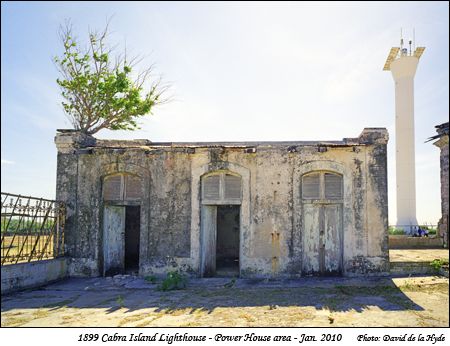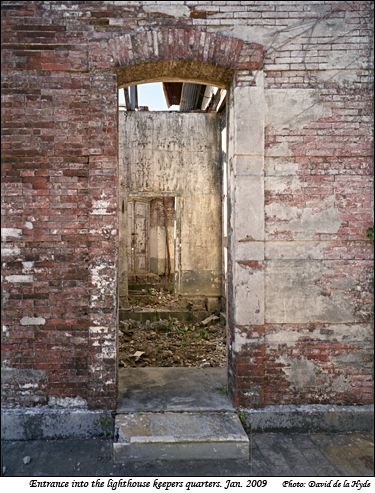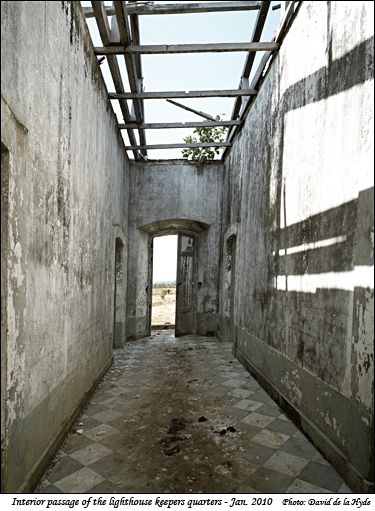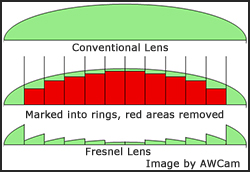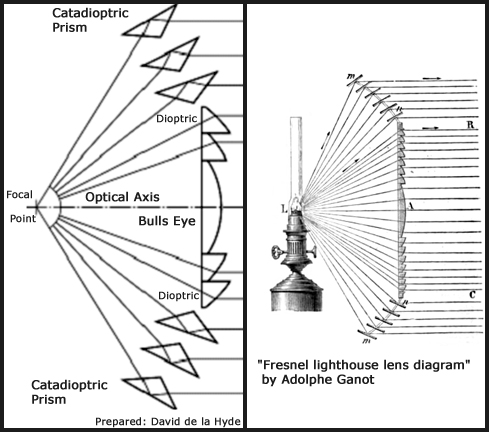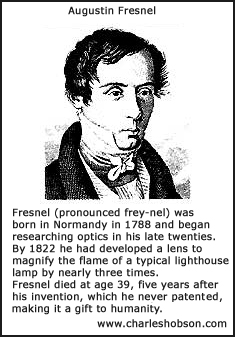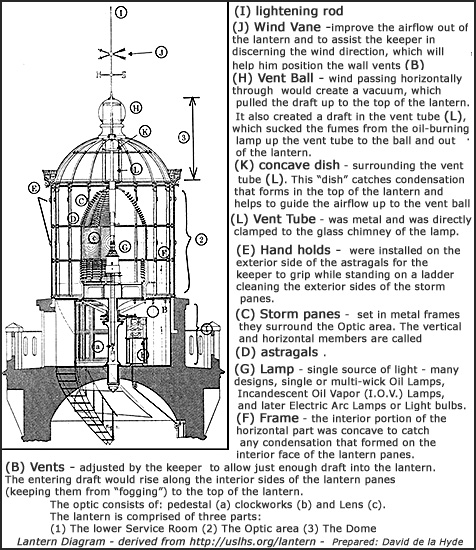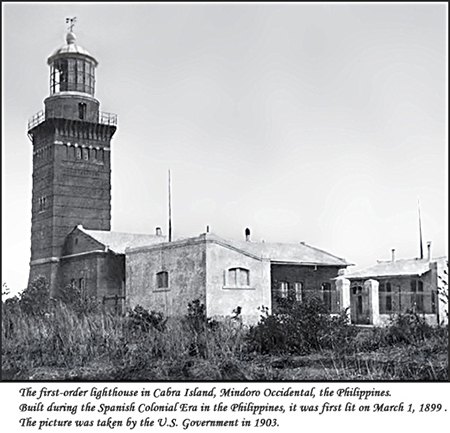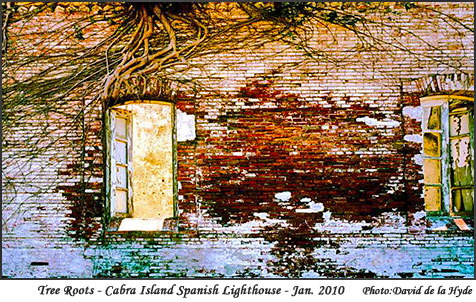
The newer solar powered lighthouse was operational circa 2000 and is situated about 100m from the previous one - originally called "Faro de la Isla de Cabra".
The old lighthouse is in a poor state of repair, and there are warning notices not to enter the interior of what was the single story lighthouse keepers residence. Apparently the spiral staircase has partly collapsed.
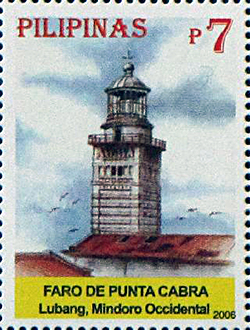
"FARO DE PUNTA CABRA, Isla de Cabra, Lubang, Mindoro Occidental - Straddling the edge of this flat island, the lighthouse of Cabra, built in 1889 is situated in a surreal bucolic setting of peanuts and the sea, the impoverished island and another 30 minutes banca ride to the island of Cabra. Cabra lighthouse is one of the few lighthouses in the country that still contains its entire original fitting including its 19th century furniture."
From an article by philatelist Dr. Ngo TiongTak
"After the replacement, the lighthouse was abandoned and left open for thieves and vandals. The expensive first-order lens were vandalized with the large front Fresnel lenses all gone." (Note: This can be seen in the top left photo.)
Reference: http://en.wikipedia.org/wiki/Cabra_Island_Lighthouse)
For more information on Fresnel Lenses at the bottom of this page: FRESNEL
